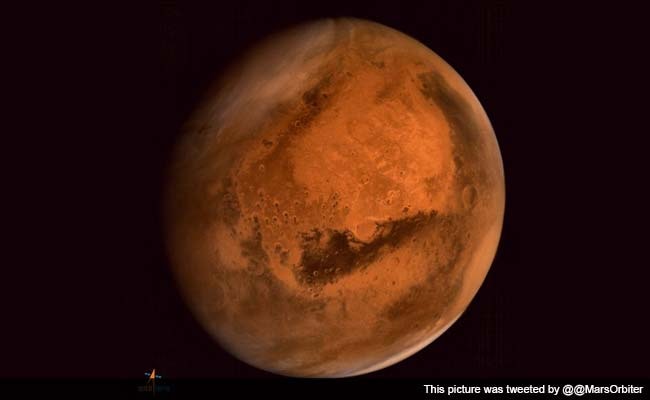
File photo of Mars.
Washington:
NASA's next nuclear-powered Mars rover, slated to launch in 2020, has started taking shape. The new vehicle wil be "smarter" than the previous one on many counts, according to the engineers on the project.
For one, the overall system is becoming heavier. The rover's wheels are getting heavier, with its body becoming a little longer. Engineers said that would change the rover's mobility system and how it interacts with the ground, Space.com reported.
"We are really looking at ways to make this largely heritage, built-to-print rover drive faster and do more science on the surface of Mars," JPL's mission manager for Mars 2020 and surface-phase lead Jennifer Trosper was quoted as saying.
One thing the Mars 2020 team is confronting right away is the issue of wheels. Curiosity has been battling wear and tear on its wheels.
"Yes, we are going to have significantly more robust wheels," That will not be the problem we have on Mars 2020," Trosper said.
Another plus for the future rover is to have machinery on Mars that is far speedier on complex terrain than Curiosity, Trosper said.
"We are putting some things aboard the vehicle to make it smarter so we do not have to be so conservative on the ground a to make this surface mission more productive," Trosper said.
By adding an aboard processor to run autonavigation algorithms, the rover would be driving -- and spending far less time thinking about driving, she said.
"We can actually spend much less percentage of the mission traversing to interesting science sites and actually do contact science at those sites," Trosper said.
Adopting these changes and other measures, she added, would make mission efficiency jump from Curiosity's roughly 55 per cent to 80 percent, up to 95 per cent for the Mars 2020 robot.
For one, the overall system is becoming heavier. The rover's wheels are getting heavier, with its body becoming a little longer. Engineers said that would change the rover's mobility system and how it interacts with the ground, Space.com reported.
"We are really looking at ways to make this largely heritage, built-to-print rover drive faster and do more science on the surface of Mars," JPL's mission manager for Mars 2020 and surface-phase lead Jennifer Trosper was quoted as saying.
One thing the Mars 2020 team is confronting right away is the issue of wheels. Curiosity has been battling wear and tear on its wheels.
"Yes, we are going to have significantly more robust wheels," That will not be the problem we have on Mars 2020," Trosper said.
Another plus for the future rover is to have machinery on Mars that is far speedier on complex terrain than Curiosity, Trosper said.
"We are putting some things aboard the vehicle to make it smarter so we do not have to be so conservative on the ground a to make this surface mission more productive," Trosper said.
By adding an aboard processor to run autonavigation algorithms, the rover would be driving -- and spending far less time thinking about driving, she said.
"We can actually spend much less percentage of the mission traversing to interesting science sites and actually do contact science at those sites," Trosper said.
Adopting these changes and other measures, she added, would make mission efficiency jump from Curiosity's roughly 55 per cent to 80 percent, up to 95 per cent for the Mars 2020 robot.
Track Latest News Live on NDTV.com and get news updates from India and around the world

